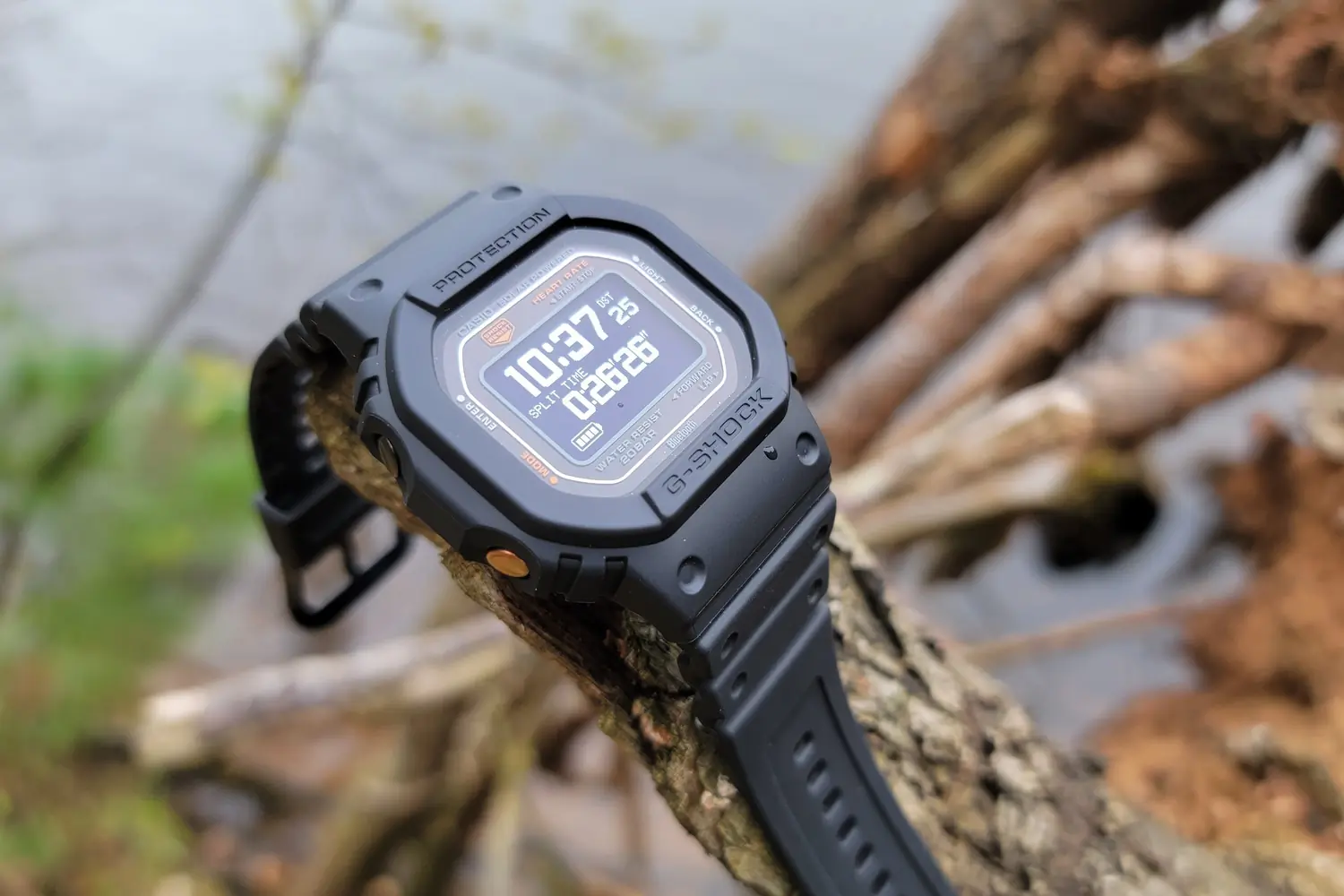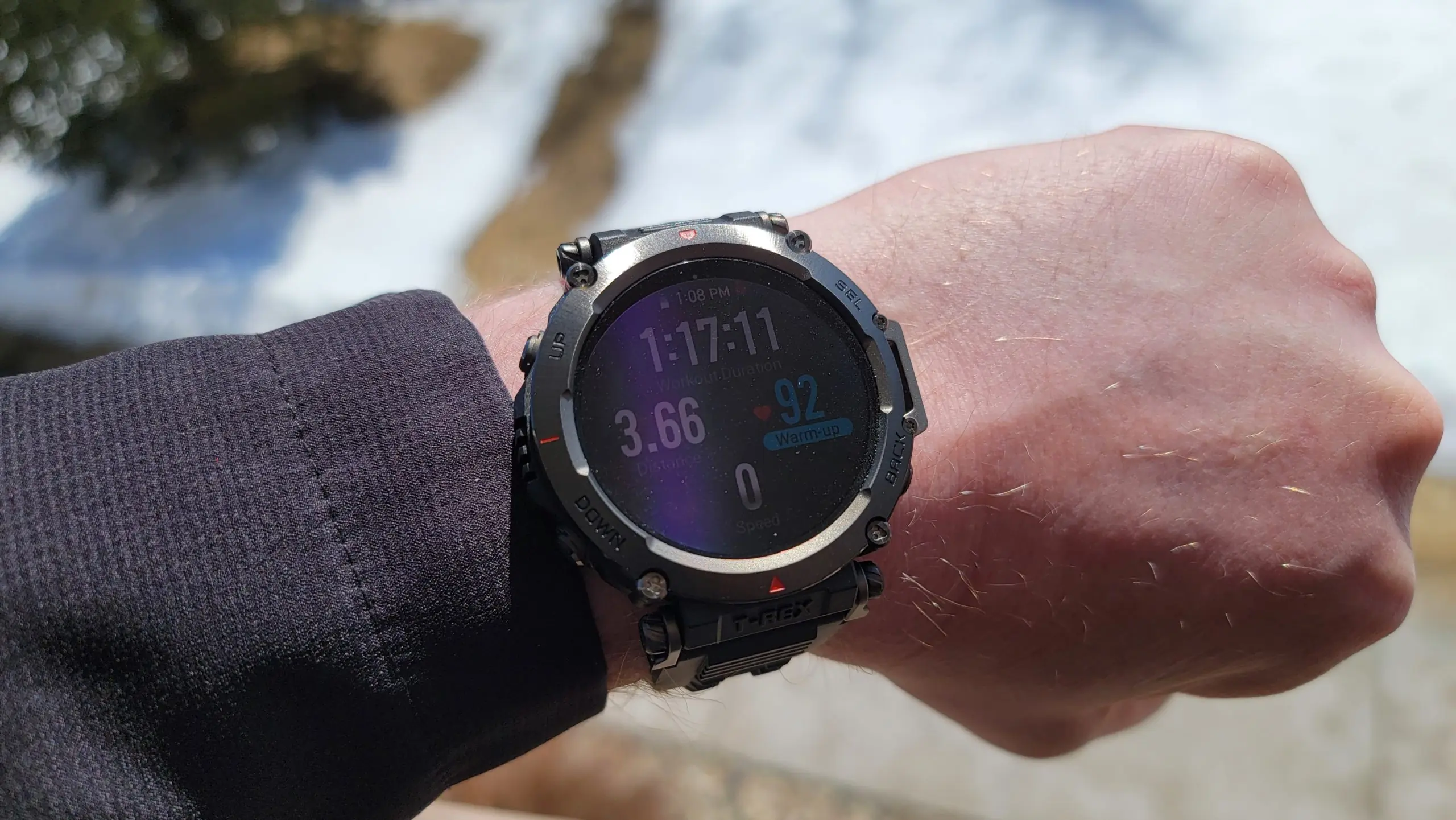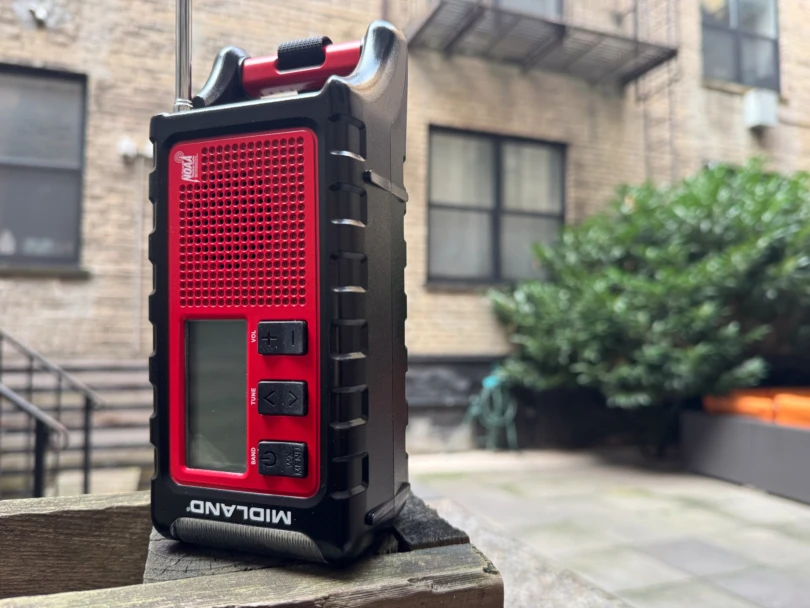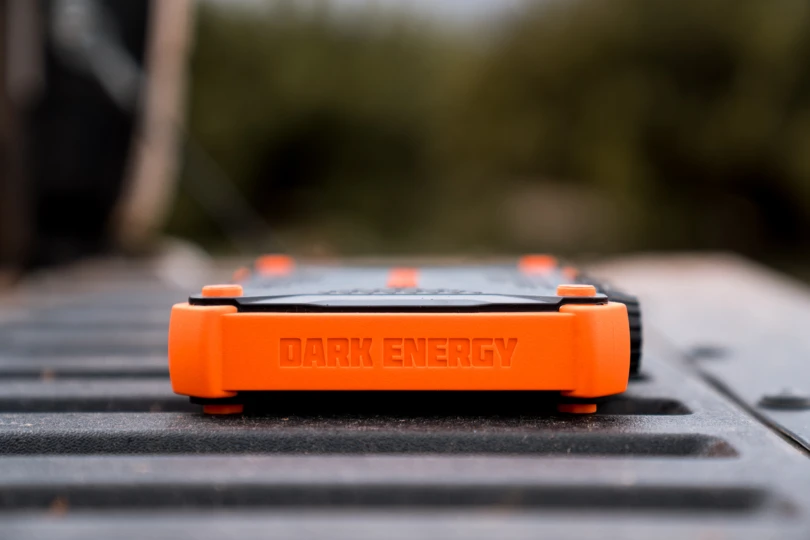A few months back, Casio dropped a bombshell on the fitness-tracker world: Starting with its new GBDH2000, the company’s fitness watches would soon be “Powered by Polar.” This collaboration between two of the more recognizable names in the field of wearable tech immediately drew my attention. But I tend to prefer small-to-medium-size watches, and the first fruit of the pairing appeared, quite frankly, to be nearly the size of a papaya.
Things changed, however, with the introduction of the DWH5600 ($299). This watch harkens back to the very foundation of the storied G-SHOCK line, with a simple, symmetrical case that’ll fit everyone from marathoners to bodybuilders.
And with many of the same fitness-measuring tools, this new watch is poised to be one of Casio’s most attractive offerings this year. After the initial reveal to the press, the company agreed to send a loaner my way for testing. And despite my high expectations, the DWH5600 managed to (mostly) live up to the hype.
In short: The G-SHOCK DWH5600 is a brilliant concept that stumbles a bit out of the gate. Its timeless footprint and solid feature set are buoyed by an affordable price point, and its rugged credentials live up to every inch of its pedigree. I encountered a few interface and sensor issues, but with the power of Polar and Casio behind it, all that stands between the DWH5600 and excellence is a software patch.
- Dimensions: 51.1 × 44.5 × 17.4 mm
- Case and band material: Bio-based resin
- Crystal material: Mineral
- Overall weight: 59 g
- Water resistance: 200 m
- Charging: Solar/USB-A
Pros
- Classic styling and shape
- Solar charging
- G-SHOCK toughness
- Competitive price
Cons
- Subpar GPS accuracy
- Interface and app shortfalls
- Questionable heart rate monitor
G-SHOCK DWH5600 Smartwatch Review
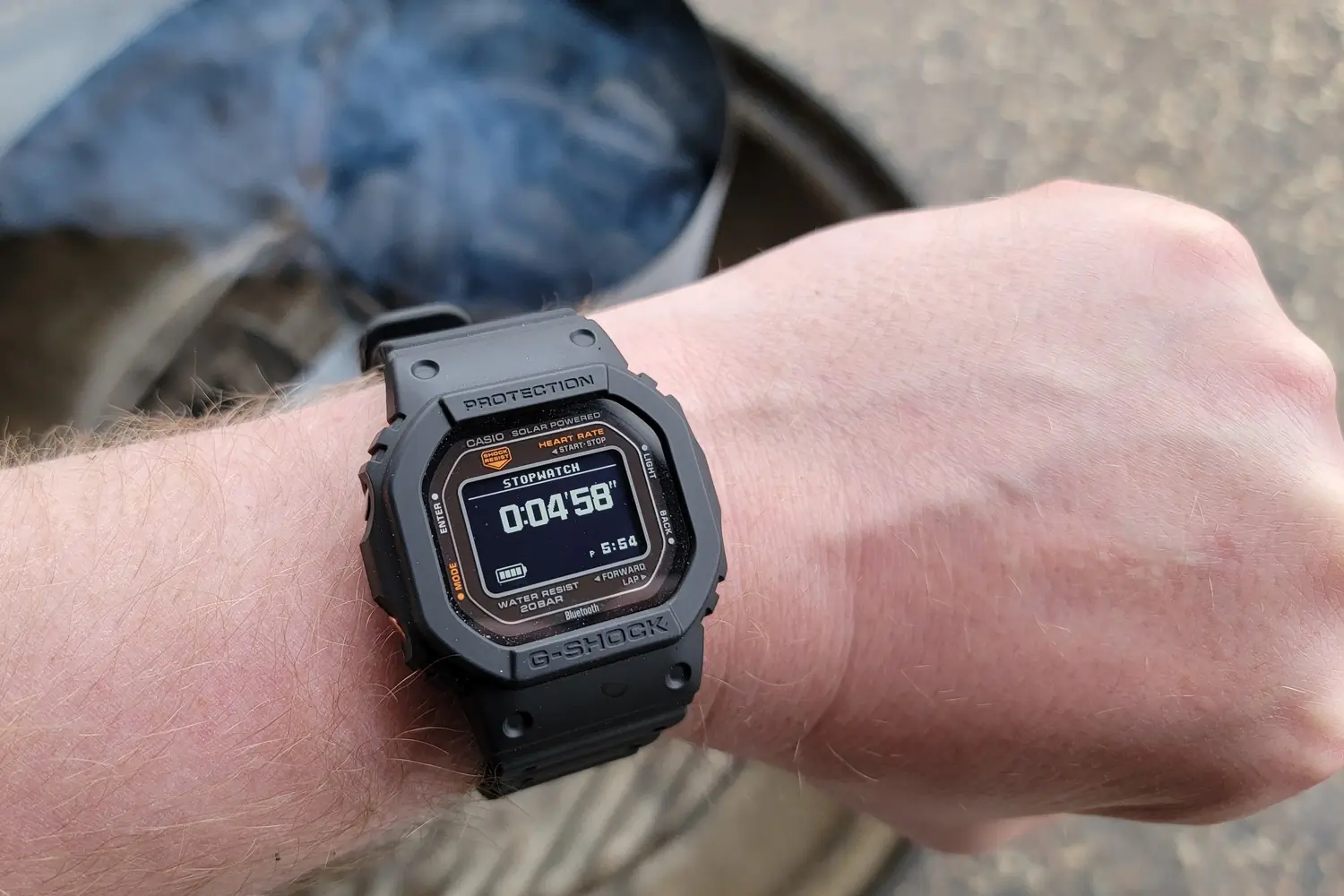
Let’s start with what the DWH5600 does well. First (and perhaps most significantly), this is neither a watered-down fitness tracker nor a less-capable version of Casio’s iconic, octagonal strongbox. From its fitness functions to its shock-resistant construction and 200m water resistance, this is a G-SHOCK, through and through.
The shape here is classic, as well, sharing the silhouette of both the original DW-5000C and modern interpretations, such as my personal GWM5610 shown here. And though it adds 4.7 mm in ride height due to its thicker case and sensors, the DWH5600 manages to wear more or less the same as its contemporaries.
But with the DWH5600, buyers will benefit from Casio’s new eco-friendly focus. As the company states, “Key resin components of the case, bezel, and band are made with bio-based resins. In addition, the case features the first use of bio-based carbon fiber-reinforced resin in a G-SHOCK.”
And unlike most smartwatches in this price bracket, the DWH5600 incorporates solar charging. According to Casio, the time display will always draw power via solar charging, even when the battery is low. And on the whole, I was able to squeeze a full week of use from the onboard battery before reaching for the included USB-A cable and clip.
I’m also a fan of the “high-definition Memory in Pixel (MIP) LCD” display. This small, monochrome screen is eminently readable, and I particularly enjoy the white numerals over the black background. Scrolling through the features, users will see everything they’re used to with Casio (stopwatch, timer, alarms, and world time), along with its suite of workout features.
Polar Partnership Pays Off
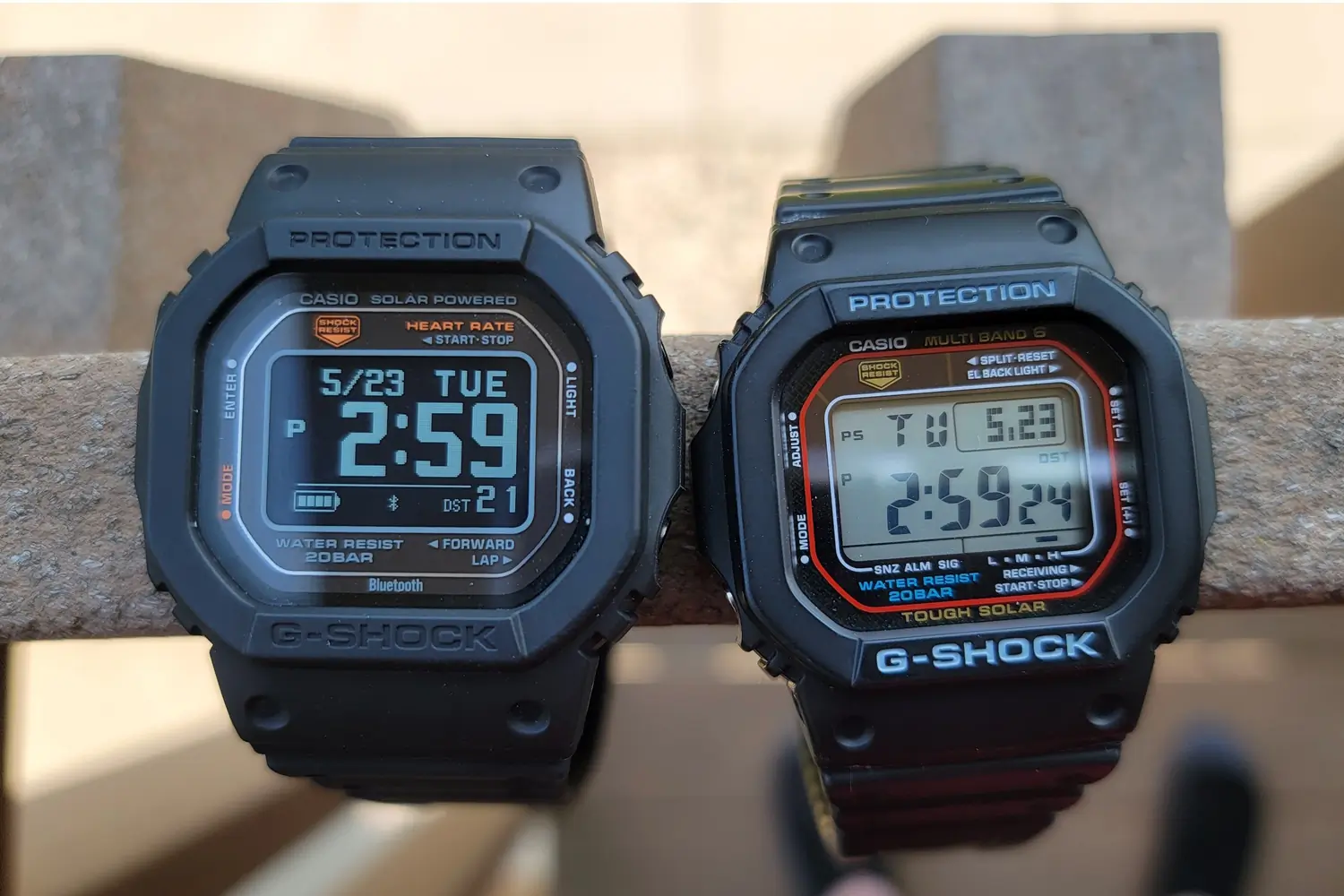



Thanks to the aforementioned partnership, the DWH5600 does more than just track your time. It can help you utilize those precious minutes to boost your overall health.
This sport watch carries four preprogrammed exercise modes: Running, Walking, Gym Workout, and Interval Timer. You access each through its own dedicated menu, using the button in the upper left corner. After many miles of both biking and walking, I found these easy to call up and use. Kudos to the interface designers, as well, who managed to incorporate the daily time into nearly every exercise screen.
Additionally, the DWH5600 includes features like sleep tracking, blood oxygen and heart rate monitoring, and a breathing exercise function. And when it comes to visualizing your results, you can click through on the small screen or connect to your smartphone using the Casio Watches app.
Here, you can see highlighted satellite maps showing the course of your ride, walk, or run, along with a wealth of analysis for your biometric data.
Shortfalls and In-Betweens
As much as I enjoy the DWH5600, here’s where the Day 1 bugs start to show. The Casio Watches app is, to put it politely, not as user-friendly as some of its competitors.
Don’t get me wrong — once you figure out where some of the more vital options and displays are located, it’s easy to pull things up. But you get the sense that this is near the beginning of Casio’s fitness-tracker journey, and it’s still working on the various means of integration.
Speaking of interfaces, let’s drop back to the smartwatch itself. If you’ve ever worn a G-SHOCK (or a regular Casio, for that matter), you’re probably familiar with the basic four-button setup.
The orientation of the functions sometimes changes, but the company always includes tiny markings to let you know what each presser does. For the most part, this carries over to the DWH5600, with one glaring exception: No reverse button.
Now, I’m not talking about a way to back out of menus and such (that button is on the lower right). But if you’re trying to manually set the date, time, or a timer, there’s no way to scroll back through the numerals without looping the long way around.
Say you’re trying to set a countdown for a half hour. If you accidentally skip past 30 minutes, you’re going to have to keep pressing that button until you roll past 59:00, back to 00:00, and keep going until 30:00 rises back into place.
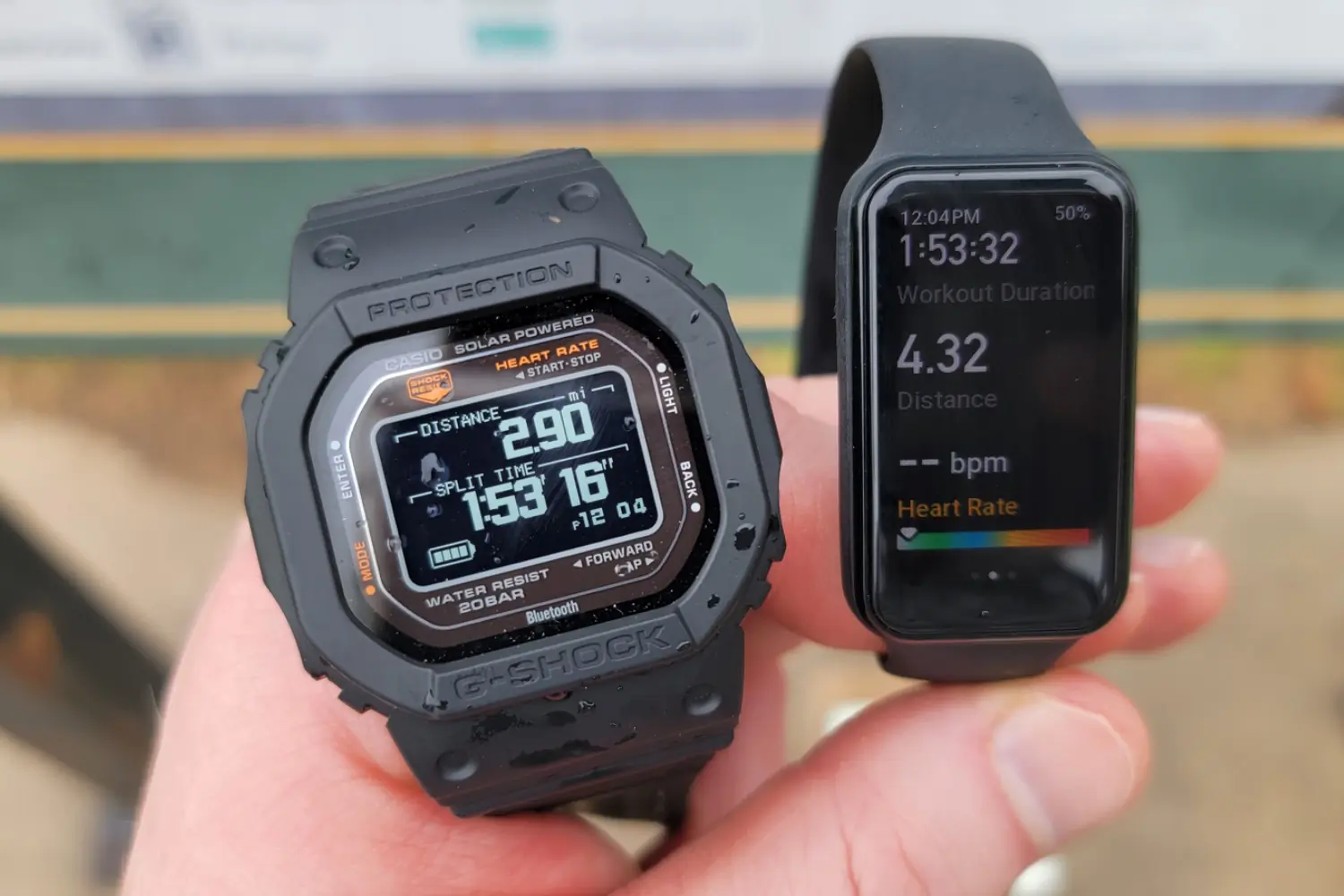



And speaking of troublesome numbers, I experienced mixed results with both the heart rate and distance sensing on my DWH5600 tester. When I set out on my first hike with the G-SHOCK, I strapped an Amazfit Band 7 to my other wrist as a means of double-checking its accuracy. As shown in the photos, there was a significant undercounting on the part of the Casio.
How do I know it’s not the Amazfit that’s screwed up? Because I checked the figures against both Google Maps and the as-posted distance on the trailhead sign. But this was early in the DWH5600 rollout, before it was enabled to work with the app. So I tried again (three times) once the G-SHOCK was ready to link up with my phone. Things got better but, in every case, the Casio fell short by around 4%.
Frankly, I’m willing to live with that figure. But what really irks me is the variance in its heart monitor. While it does a fine job at rest, the DWH5600 would frequently show a reading of +20 to even +40 bpm compared to the Amazfit.
I know what it feels like when my chest thumps at 160, and I’m not about to get there after walking a leisurely quarter mile. This also hurts its ability to measure calories burned, exaggerating the amount of energy I’ve expended.
Conclusion: Casio G-SHOCK DWH5600
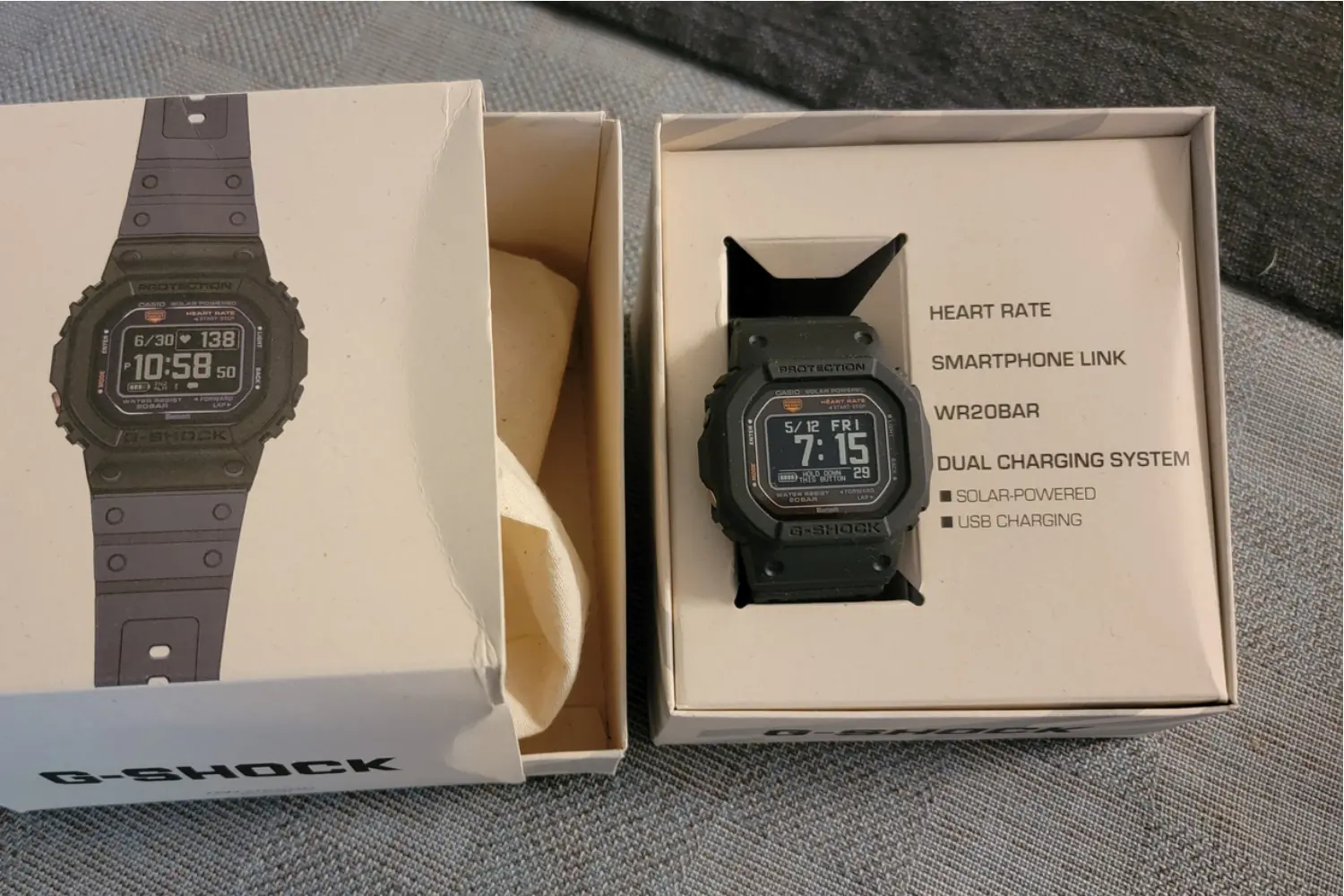



In closing, there’s a great deal to love about the DWH5600. From its timeless styling to its tool suite, legibility, and solar charging, this represents the perfect blueprint for a streamlined, fitness-enabled G-SHOCK. In keeping with construction terms, this feels a bit like an early revision of what will eventually be an efficient, smooth-running system.
But here’s the nice thing about the incorporation of the Powered by Polar architecture: Perhaps every issue I’ve experienced could eventually be addressed with a software patch. Keep in mind, I snagged this DWH5600 before the product had technically launched and a few initial updates went through (once I connected with the app). Who’s to say my complaints won’t be quashed with the next bit of bug-fix code?
On the hardware front, the DWH5600 is worth every bit of its $299 cost. The screen, case, band, and buttons feel wonderful, and it wears like a fitness tracker for actual wristwatch enthusiasts. While I encountered a few hurdles out of the gate, the future of this G-SHOCK looks bright.
